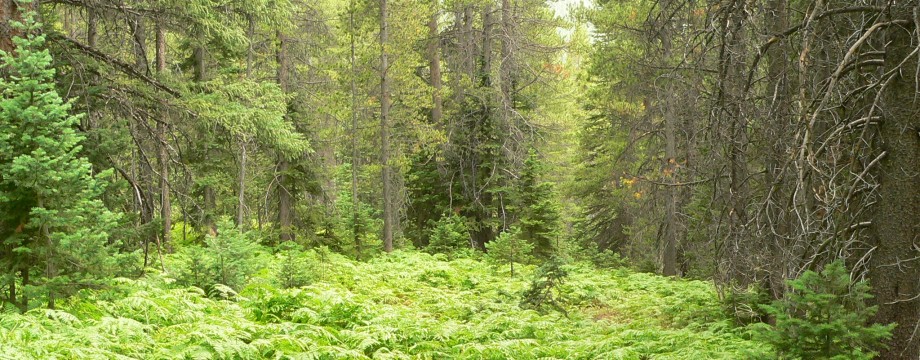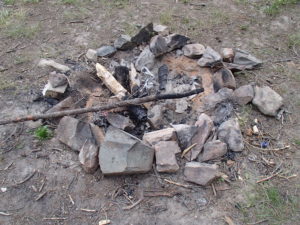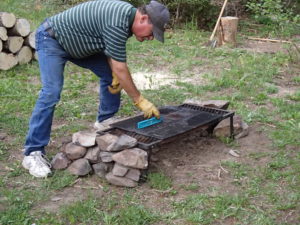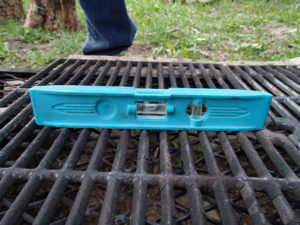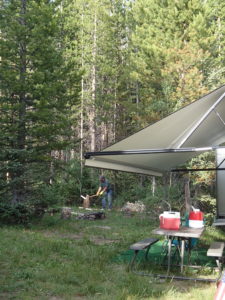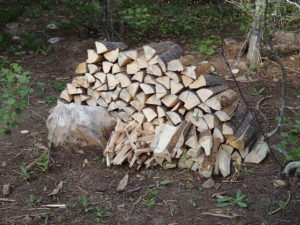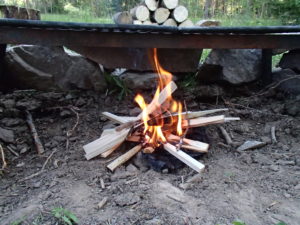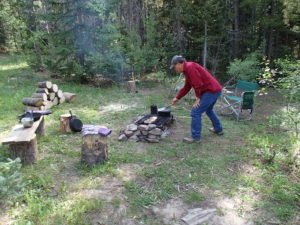I am celebrating how terrific my husband, Karl is. He joined me in retirement nine months ago – and it isn’t exaggerating to say that maybe he’s not completely grasped the normal concept of being retired. He says that he is “working on his retirement skills.” Even that sentence, said with a twinkle in his eye that tells me he’s teasing, belies the underlying truth that he is still striving for perfection instead of just rolling with the flow. My definition of retirement has been to blog and write, teach myself to tat, read a lot, lay in the shade or snorkel lazily. (The evidence of this sedate life style is in the small roll of jelly that has appeared around my middle). Karl’s definition of retirement isn’t sitting and doing nothing. (He does read a lot more than he used to, and he drinks his morning coffee while relaxing, not on the run, I will acknowledge that!) But, still, he’s worked HARD in the last nine months. Now that we are in Wyoming and there isn’t any building/remodeling on the house to do and he isn’t near a rain forest that needs taming or lawn to mow, I wondered how he’d fill the hours of his day. I’m amused to report that he has found a myriad of ways to occupy himself.
Take, for example, camping. Now, for years he’s done all the cooking in our home, and I do all the cleaning and cleaning up. It is an arrangement that suits us perfectly. When we are camping, we continue our arrangement, the only difference is that part of the camping experience is to cook outside over an open fire. Now honestly, most campfires look something like this: (I took this picture when we arrived out our most recent camp spot, just for reference)
In this model, the camper lays an assortment of odd sized rocks into some semblance of a circle, then throws in any wood the kids can gather along with some paper, a match and voila! A fire. This imaginary family then finds several sticks that can impale a few hot dogs and some marshmallows and everyone is in business. Camping memories are being made and every belly is full of beaks and feet and fun.
This is not the model used by the Coulsons. First, if there is a fire ring like the aforementioned, usually Karl’s first job is to dismantle it, moving the rocks and shoveling the ashes, unburned logs, and charred beer cans out of the way. Next, he reforms the rocks into a sort of 3/4 oval. The purpose of this, according the the master of the camp is that the rocks on the back of the oval then deflect the heat toward the front, thereby providing more heat to campers sitting within its parabolic reaches while also providing a more even cooking heat. The next step is to install the grill that travels with us. Now, again, some campers might just put a grill over the fire. Oh no. When I say install, I mean it. The installation isn’t complete until the grill totally rocked in and level. Yes. Not eyeballed. Level. As in confirmed flat plane using a level tool. Really.
The camp master isn’t satisfied until the bubbles are are in the middle.
Now, he can begin making fire. But. There is no gathering of odd twigs and branches for inclusion in a Coulson fire. Instead, there is chainsaw lumberjacking to find wood that is perfectly aged and precisely dried, then cut all the same length (the length that will fit nicely into the fireplace). Next comes the splitting and stacking ritual. This can take anywhere from one to two hours, so if you are hungry you might just as well grab a cookie from the camper. I stay out of the way as an ax is in use.
The end result: Please note that the small kindling is in the front along with a bit larger pieces. The actual cooking wood is the large stack in the back. (We also carry a plastic tarp with us to cover the wood in case it rains!)
Now, he is ready to light the fire. It is beautiful, nearly smokeless creation.
Karl feeds this fire, adding larger wood until he’s accomplished a nice fire over a hot and useful bed of coals. Then and only then does the actual preparation of food begin. Which is good, because by now we are out of cookies and I’ve begun chewing on the bark of a discarded twig.
But really, whether pancakes for breakfast or hamburgers for dinner, the worth is always worth the wait. Why is it that food tastes different and better over an open fire? On second thought, maybe the little roll of fat around my middle has more to do with Karl’s cooking than any activity (or lack of activity) choice I make!

